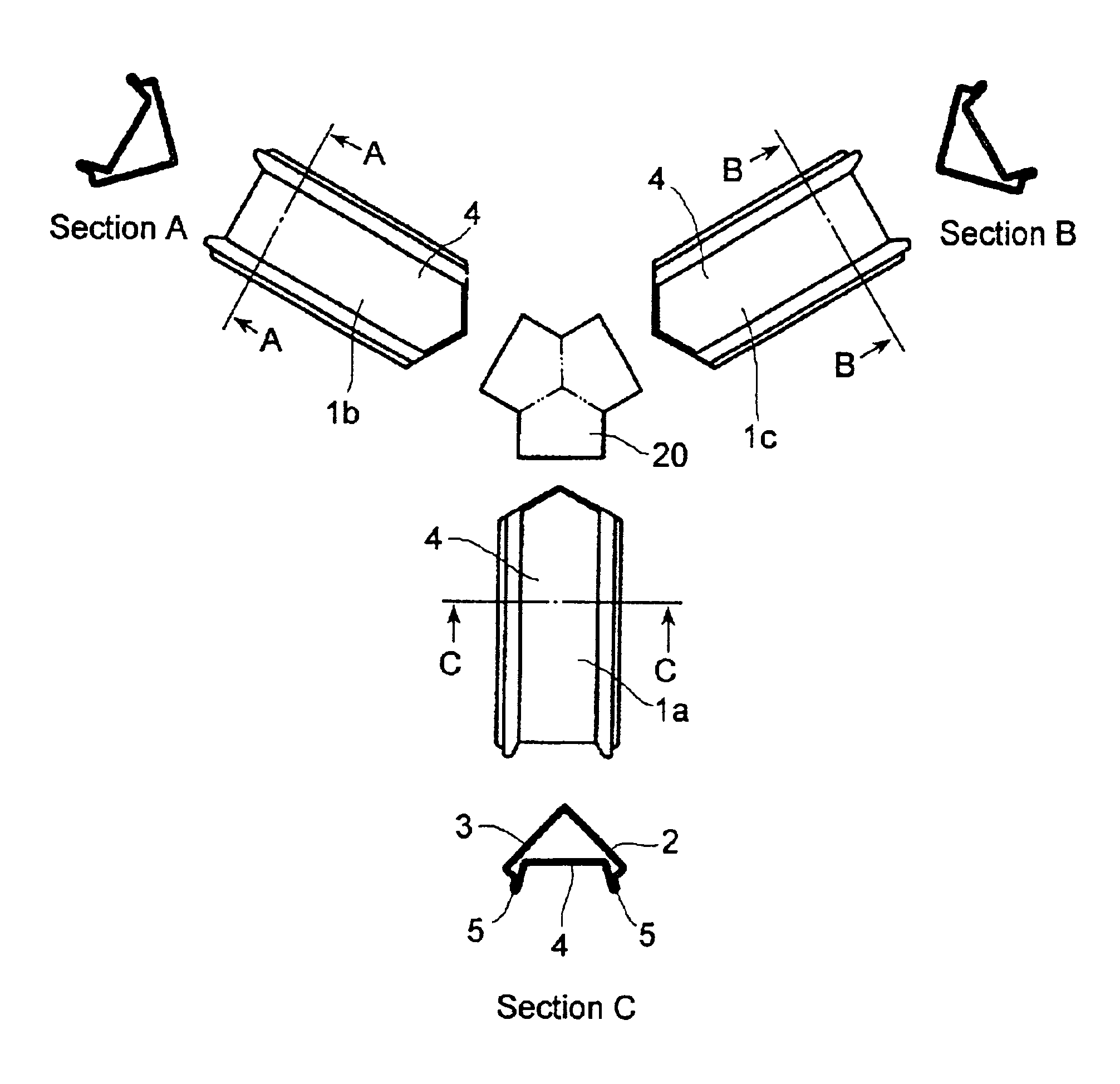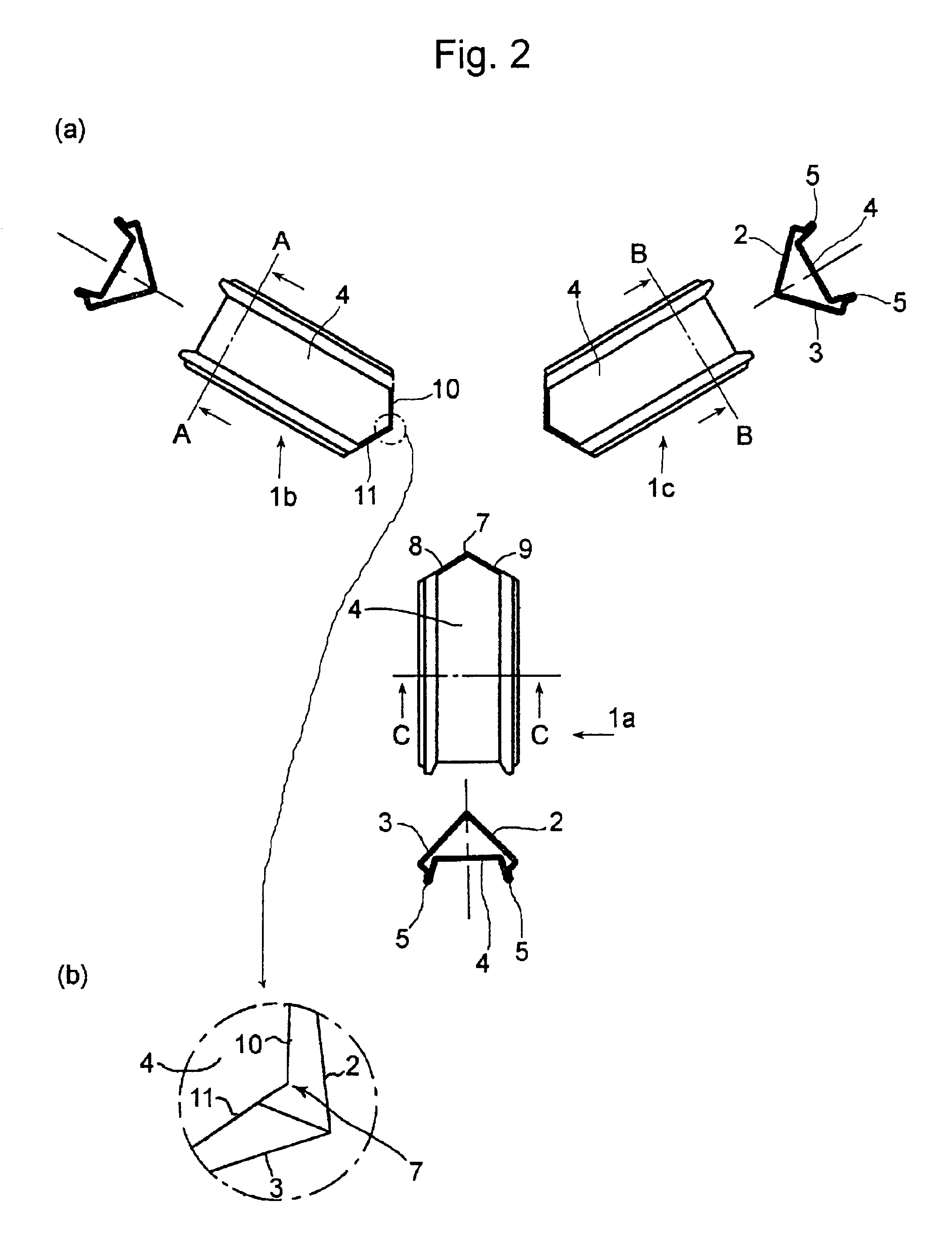Frame for electrical and electronic equipment housing cabinets and a frame joining structure
- Summary
- Abstract
- Description
- Claims
- Application Information
AI Technical Summary
Benefits of technology
Problems solved by technology
Method used
Image
Examples
embodiment form (
(4) Re: Embodiment Form (D)
[0142]FIGS. 41 to 49 show a first embodiment of the embodiment form (D), FIG. 41 being a perspective view of a corner portion as veiwed from outside a cabinet, FIG. 42 being a front view showing the corner portion, FIG. 43 being a cross sectional view, and FIG. 44 being a perspective view of the corner portion as viewed from inside the cabinet. As shown in these drawings, the corner portion is formed by joining ends of three orthogonal frames D1 in vertical, lateral and depthwise directions.
[0143]The frames D2 according to the first embodiment are formed by folding a steel sheet into the same cross-sectional shape as shown in FIGS. 45 to 47. More specifically, the respective frames D1 comprises a recessed portion D5 as a draining portion by using side walls D32, D32 directed toward the corner to form substantially hollow projections D4, D4 on both ends of an oblique side D3 of a right-angled triangular-shaped hollow portion D2, and a right-angled folded si...
PUM
 Login to View More
Login to View More Abstract
Description
Claims
Application Information
 Login to View More
Login to View More - R&D
- Intellectual Property
- Life Sciences
- Materials
- Tech Scout
- Unparalleled Data Quality
- Higher Quality Content
- 60% Fewer Hallucinations
Browse by: Latest US Patents, China's latest patents, Technical Efficacy Thesaurus, Application Domain, Technology Topic, Popular Technical Reports.
© 2025 PatSnap. All rights reserved.Legal|Privacy policy|Modern Slavery Act Transparency Statement|Sitemap|About US| Contact US: help@patsnap.com



